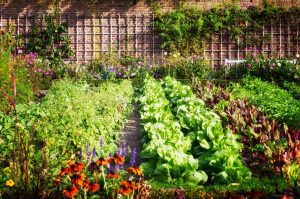Let’s Pasta sources most of the raw materials we use to make our pasta products locally, here in Southern Alberta. Luckily for us (and for you), Alberta is an agricultural powerhouse. Endowed with expansive sweeps of nutrient-rich, arable land, plenty of sunshine and an extensive irrigation system, Alberta produces about 49% of Canada’s total production of barley, 31% of Canadian wheat, 28% of Canadian pulses such as peas, beans, fava beans, chickpeas and lentils and 68% of Canadian beef (2020). Approximately 1/3 of Alberta’s landmass is great for growing food and much of that is in Southern Alberta.
If you thought Alberta was just one expansive oil field, think again. Alberta’s agricultural industry and its output of food is critically important for Alberta, Canada and even the world.
Alberta Farmers Contribute Hugely to Economic Health and Food Security
Just how important is the contribution of Alberta farmers to economic health and food security? Here’s a just a few salient statistics:
- The revenues from farming in Alberta in 2020, amounted to over a quarter of Canada’s $87 billion in total farm revenues.
- Alberta’s agricultural sector contributed $9.68 billion to Alberta’s economy in 2020 and employs about 75,000 Albertans
- Alberta exports approximately 11 million tonnes of wheat to 51 countries around the world every year — and that helps feed about 1.5 billion people (Invest Alberta)
Alberta is a Leader in Environmentally-friendly Agriculture Best Practises
With its long farming history at its foundation, Alberta has grown to become a leader in technological innovation that facilitates stewardship of the land and ecosystems, while still increasing food production. As just one example, Alberta is a world leader in manure treatment technology, which separates nutrients for fertilizer and recycles the water.
Farmers keep themselves informed on the latest research, consulting with agricultural specialists and agronomists to incorporate technological innovations and best practices because it is good for the land, good for the environment and it simply makes good business sense. The farm is increasingly treated as a complex ecosystem in its own right with multiple components that work together to maintain the health of the system. Let’s take a simplified look at how this works in practise — taking the use of fertilizer as an example.
How Environmentally-friendly Practises Work in the Field: the Example of Fertilizer
Reducing the amount of fertilizer by increasing its effectiveness is in the best interest of the farm business. Why? Fertilizer is expensive and the inorganic nitrogen in fertilizer produces nitrous oxide, which is a greenhouse gas. Reducing fertilizer is good for the land, good for the environment and it is also good for the farming business to reduce costs.
That is why Alberta farmers, in conjunction with agronomists, have been incorporating environmentally-friendly practices that still allow for a good yield, for years, in order to reduce fertilizer use. The aim is simple: the least amount of inputs for the greatest output. It comes down to the 4R Nutrient Stewardship protocol: Apply the Right fertilizer, at the Right rate, at the Right place, at the Right time.
New technology combined with age-old farming practices help make the application of fertilizer more precise so it is more efficient and less is used. Here’s how it works in a nutshell:
- The previous year’s crop is analyzed for quality, determining where deficiencies occured
- Advanced technology such as drones are used to produce a topographical read-out of moisture and soil conditions of field intended for the new year’s crop
- The farmer and agronomist work together to create a plan to use the least amount of the right fertilizer for that field including when it should be applied. Applying just the right amount at the right time also makes use of technology as farmers now have access to equipment fitted with variable rate control and GPS, so fertilizer application is accurately targeted.
These practices directly related to a specific crop grown on a specific field are incorporated into the larger picture of the farm as an ecosystem for even greater reduction of greenhouse gasses. Enter crop rotation, no-tilling and biodiversity. For a simple example:
- Field peas don’t require nitrogen, and in fact they fix nitrogen in ground, so peas are used in crop rotation to reduce the need for fertilizer
- Crops such as canola or wheat are underseeded with alfalfa or clover because these plants fix the nitrogen in the soil for the following crops. Cover crops also reduce weeds, which allows the farmer to do away with tilling, which in turn preserves the integrity of the soil, conserving moisture and reducing erosion. About half of Albertan farms use no-tilling practices.
- Alfalfa is used to feed cattle in winter. The manure that the cattle produce is used as organic fertilizer for the fields in the spring.
Farming is obviously much more complex than the couple of examples described here, but we hope this gives you a taste of how it all works together to reduce the environmental impacts of farming while still feeding the planet.
A Big Thank You to Our Alberta Farmers
These practices are the general trend in farming and have been for many years, expanding as new discoveries are made and technologies are developed. And while Alberta is, in many ways, leading the way, the trend is Canada-wide. Farmers want to leave the land in better condition than they found it. Let’s Pasta fully supports Sustainable Agriculture which incorporates practices such as these to support the land as well as people as a holistic system.
In this harvest season, we want to give a big shout out and heart-felt thank you to our farmers and all they do for us.




